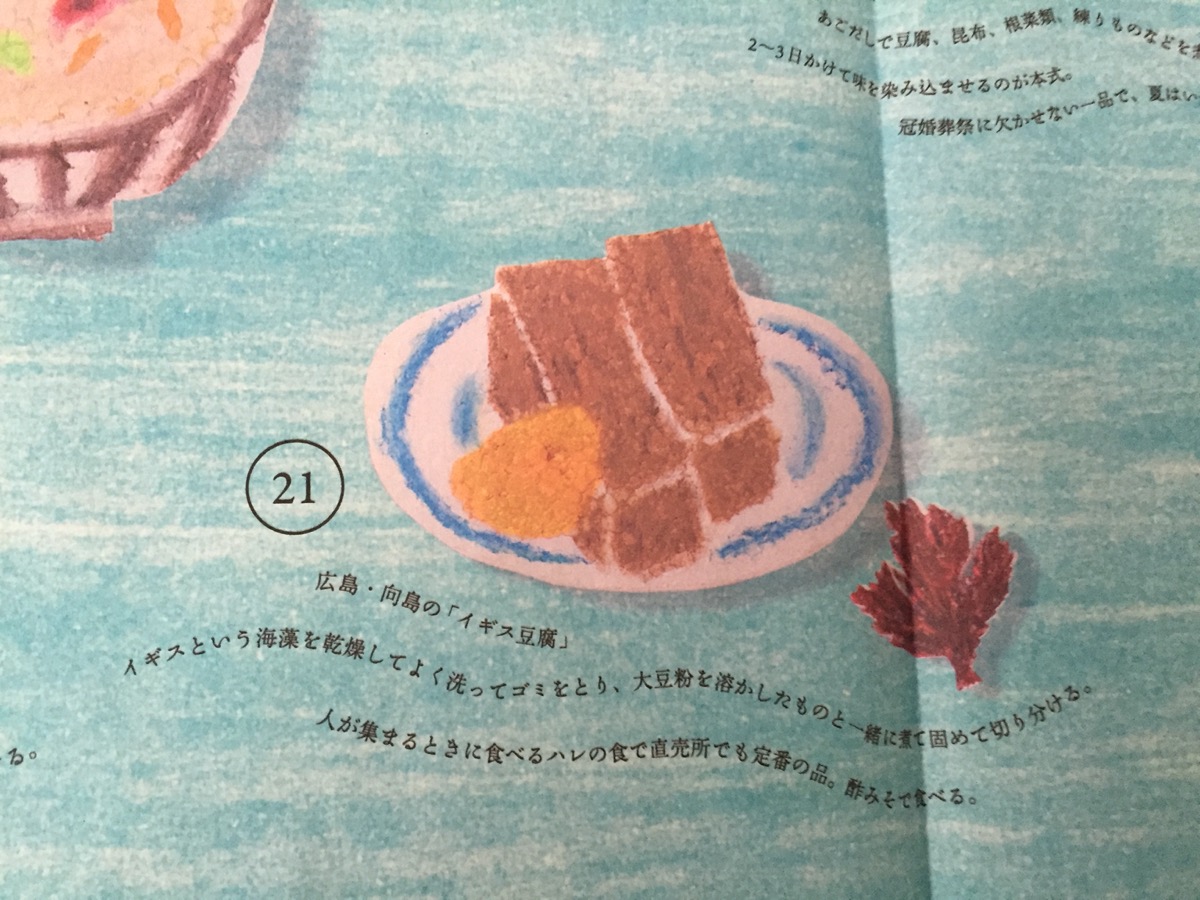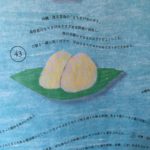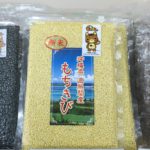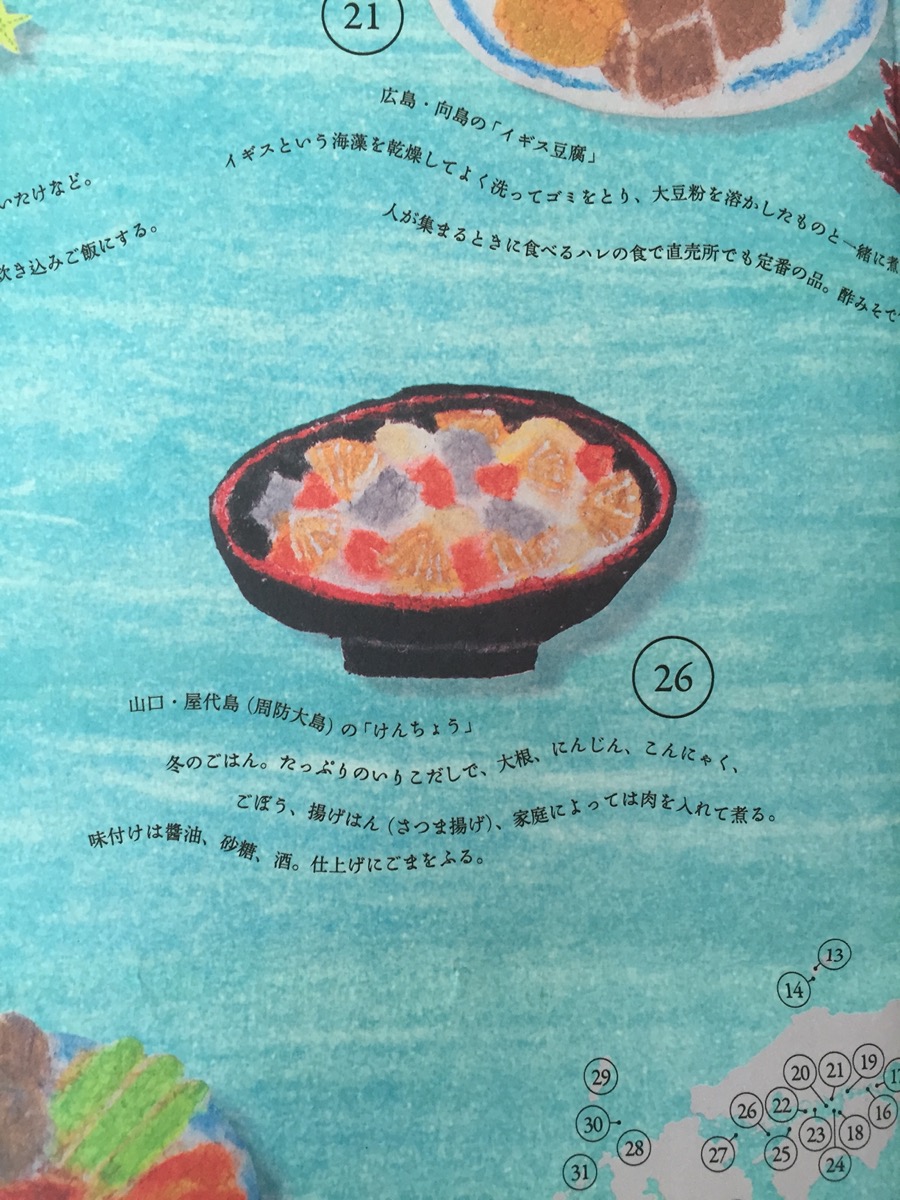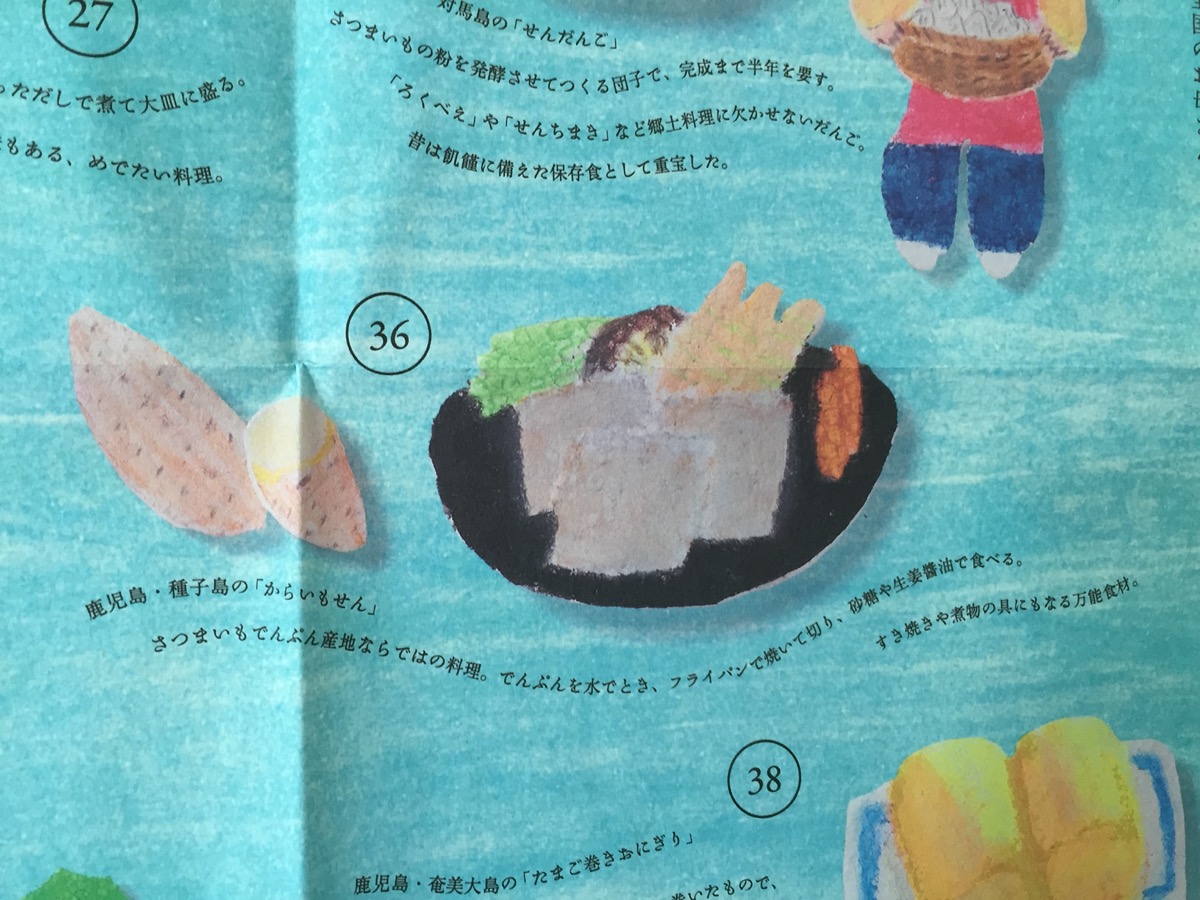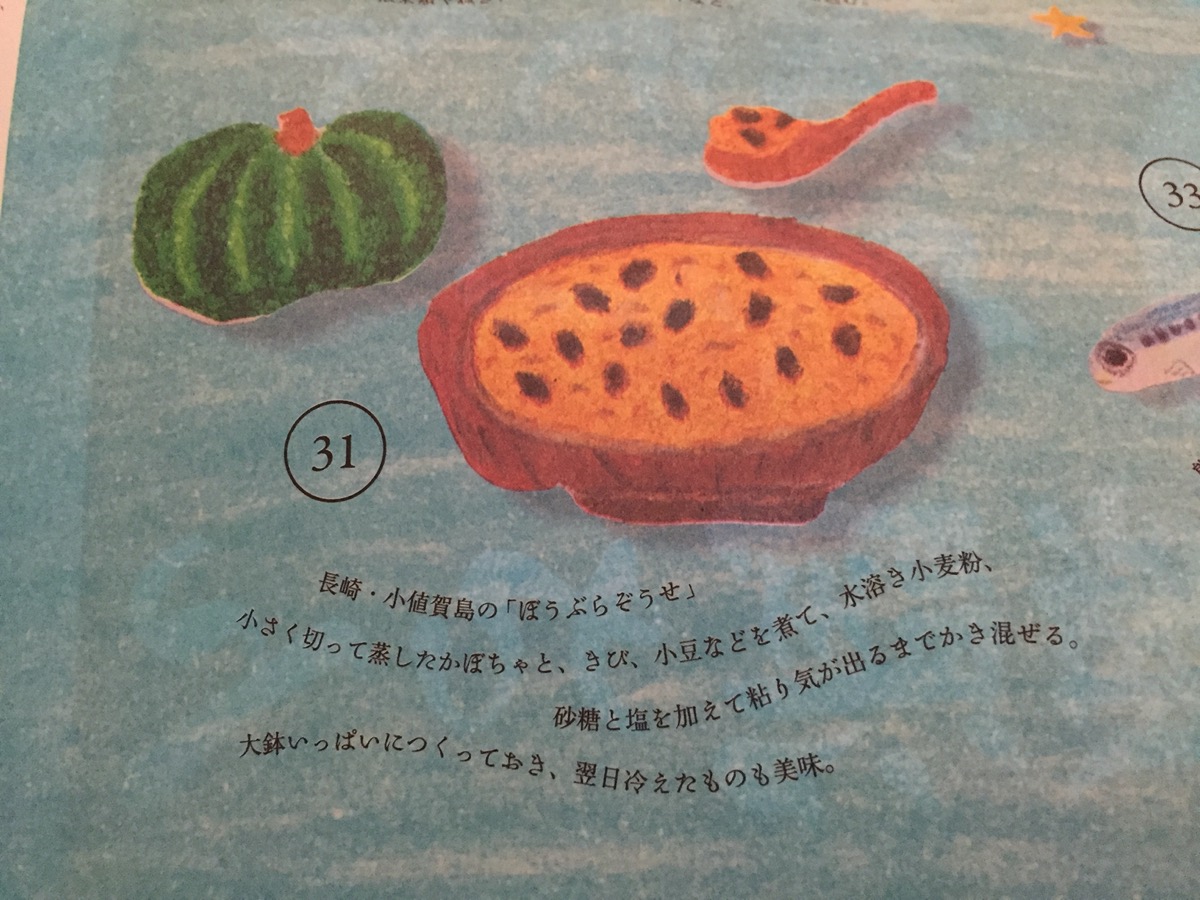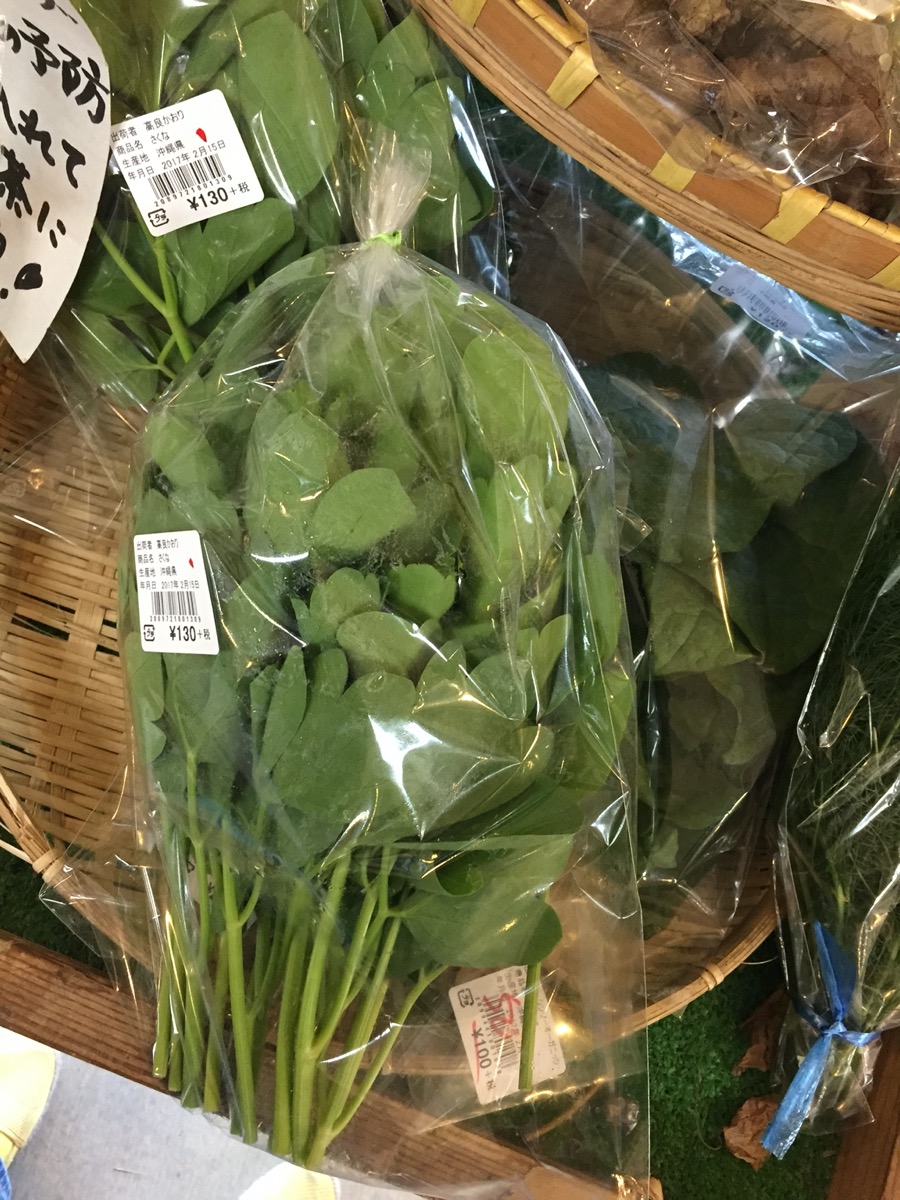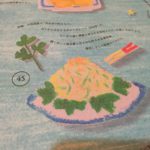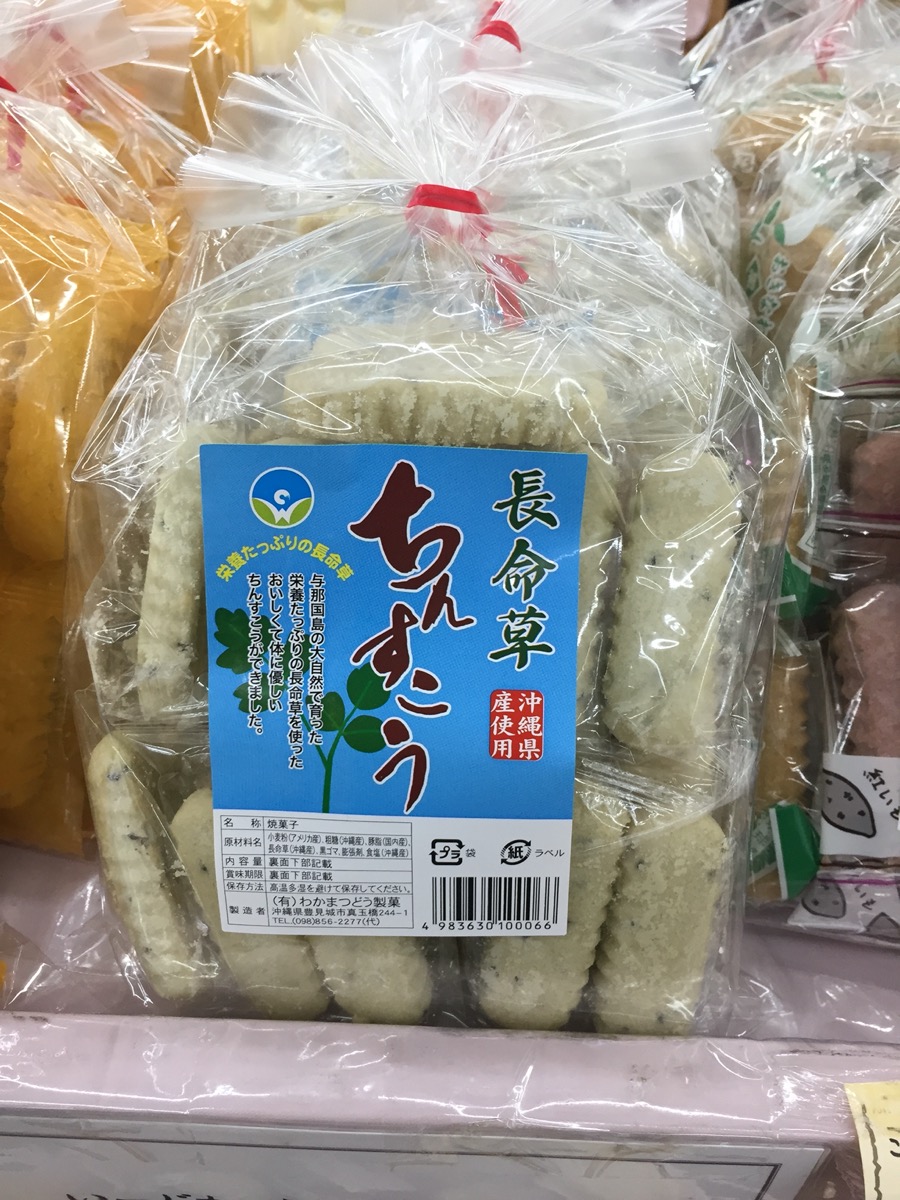イギス豆腐 Igisu Tofu is known as the local diet of people living in the islands of the Seto Inland Sea and it is also said to be the food of longevity. This version of the dish comes from 向島 Mukoujima, located in Hiroshima. This one more recipe from the Island Mama’s homemade cooking news article (part 1 is here).
Igisu is a kind of red seaweed that grows on reefs along the shoreline. It is harvested and dried. To make this “tofu” it is then mixed with soy bean powder (or rice bran depending on the recipe) and liquid, then pressed into a mold and chilled to solidify.
Igisu tofu イギス豆腐 recipe: most of the recipes I was able to find from Mukoujima called to mix with rice bran, however some from Ehime called to mix with soy bean powder instead of rice bran; if you decide to do this, you mix 100 g of soybean powder with 7 c of liquid and no straining bag is needed, just add the soybean powder directly to the liquid, otherwise the directions are basically the same.
Igisu, dried, 30g
rice bran, 40g
vinegar, 1 tbsp
soup stock (dashi + water), 6 c.
salt, to taste
mirin, 1 tbsp
**Sauce for topping:
mustard powder, 3 g
white miso, 3 tbsp
sugar, 3 tbsp
mirin, 2 tbsp
Wash the igisu well repeatedly until the water is clean. Put the rice bran in the cloth bag over a bowl; to make the juice of rice bran, strain the soup stock through the bag with the rice bran, gently massaging. Add the rice bran juice and igisu to a pot. Turn on heat and add the vinegar. Over low heat, boil, cook until igisu dissolves. Strain in a colander (if needed), put back in the pot, adjust the seasoning with salt and mirin. Put into mold, and chill to solidify.
Sauce: Put the mustard in a bowl and mix with hot water. Then mix with miso, sugar, mirin. Serve over the igisu tofu.
Other regions that make igisu tofu also add in small shrimp, edamame, black sesame seeds, shredded carrot to the “tofu” while cooking. I prefer the simplicity, but sometimes it might be nice to spice it up a bit.
